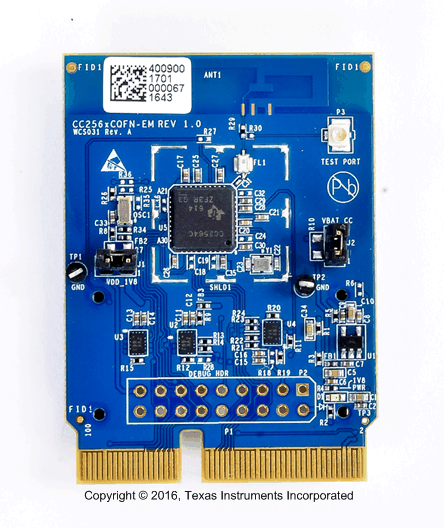CC256xCQFN-EM
Trademarks
LaunchPad™ and Code Composer Studio™ are trademarks of Texas Instruments.
Bluetooth® is a registered trademark of Bluetooth SIG, Inc.
All trademarks are the property of their respective owners.
1 Introduction to the CC256xCQFN-EM Board
This user's guide is intended for use with TI's Bluetooth® development platform, the CC256xCQFN-EM board (see Figure 1-1). This guide helps users quickly get started integrating the board with TI's evaluation platforms and software SDKs. In addition, this user's guide describes the components and configurations of the board so that users can quickly get started using it for various Bluetooth applications.
This guide provides information about the module so that developers can use the board specifics to apply it to their applications. Module information and capabilities, including pin descriptions as well as available software and tools, enhance the user's out-of-box experience.
 Figure 1-1 CC256xCQFN-EM Board
Figure 1-1 CC256xCQFN-EM Board